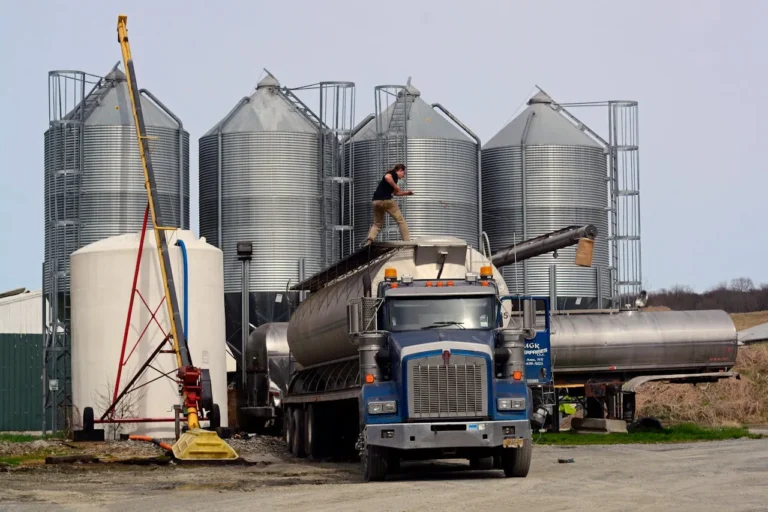
Global Caravans Market Outlook 2025–2034: Remote Work, Eco-Friendly Trends, and Technological Innovation Drive Growth
The “Caravans Market Outlook 2025–2034” report, now available on ResearchAndMarkets.com, offers a comprehensive assessment of one of the fastest-evolving segments in the travel and mobility industry. Valued at USD 14.9 billion in 2025, the global caravans market is forecast to grow at a compound annual growth rate (CAGR) of 5.6%, reaching USD 24.4 billion by 2034. This steady growth trajectory is fueled by evolving consumer lifestyles, the surge in remote work, rising interest in sustainable travel, and the growing appeal of flexible and cost-effective vacation alternatives.
Market Overview: Caravans as a Lifestyle Choice
Caravans, also known as camper vans, travel trailers, or motorhomes, have transitioned from niche recreational vehicles to mainstream lifestyle enablers. Whether it’s the freedom of exploring scenic byways, staying connected while working remotely, or reducing travel costs, caravans provide an appealing home-on-wheels solution. Today’s market spans compact teardrop trailers suited for solo travelers to luxury motorhomes outfitted with smart technology, sustainable materials, and premium amenities.
Key Growth Drivers and Market Trends
Several macro trends are transforming the caravans market and reshaping customer expectations:
1. The Rise of Remote Work and Digital Nomadism
The global shift to remote and hybrid work environments has opened new avenues for lifestyle mobility. Increasing numbers of professionals are opting for caravans that double as mobile workspaces, featuring ergonomic interiors, solar power systems, high-speed internet, and soundproofed zones. This trend has led manufacturers to rethink traditional layouts and focus on workspace optimization, seamless connectivity, and power autonomy.
2. Growing Preference for Eco-Friendly and Sustainable Travel
Environmental consciousness among consumers has accelerated the demand for energy-efficient, low-impact caravan models. Manufacturers are integrating solar panels, LED lighting, composting toilets, and energy-efficient appliances, along with using recyclable materials and lightweight composite structures to reduce carbon footprints and enhance fuel economy.
3. Technological Advancements and Smart Features
Modern caravans are increasingly equipped with smart home technology—including app-controlled climate systems, voice-activated lighting, and intelligent safety features such as collision detection and lane assist. Innovations in battery storage, electric drivetrains, and integrated infotainment systems are transforming caravans into truly connected and autonomous living units.
4. Rising Popularity of Compact, Lightweight Models
Compact and towable caravans are gaining traction, especially among first-time buyers, younger travelers, and those with smaller vehicles. These models are easier to maneuver, more affordable, and ideal for short trips or weekend getaways—making them a practical entry point into caravan ownership.
5. Off-Grid and Off-Road Capabilities
With growing interest in outdoor adventures and remote destinations, demand is rising for caravans with off-road suspension, larger water tanks, solar battery setups, and enhanced insulation. These rugged caravans support long-term travel in off-grid locations, catering to overlanders and outdoor enthusiasts.
Regional Analysis
North America and Europe: Established Markets
North America, particularly the United States, remains the dominant market due to its well-established RV culture, expansive road infrastructure, and favorable travel regulations. Similarly, Europe’s caravan market is supported by a strong camping tradition, high disposable incomes, and government initiatives promoting sustainable tourism.
Asia-Pacific: The Emerging Growth Engine
Countries such as China, India, Australia, and Japan are witnessing increased adoption of caravans driven by a rising middle class, growing interest in outdoor recreation, and domestic travel trends. In Australia, the caravanning lifestyle is deeply embedded, while in India and China, manufacturers are targeting aspirational customers with compact, affordable models.
Latin America, Middle East & Africa: Untapped Potential
While still emerging, markets in South and Central America, the Middle East, and Africa are gaining attention. These regions offer long-term growth opportunities, particularly as governments invest in tourism infrastructure and economic development.
Market Challenges
Despite its promising outlook, the caravans industry faces several challenges:
- High Initial Costs: Premium models can be expensive, limiting accessibility for budget-conscious consumers.
- Space Constraints: Compared to traditional homes or larger RVs, space and storage limitations may deter long-term users.
- Regulatory Barriers: Towing regulations, parking restrictions, and insurance requirements vary by country and can complicate ownership.
- Infrastructure Gaps: Lack of caravan-friendly facilities and campgrounds in some regions hampers adoption.
Market Segmentation
The report segments the caravans market across several parameters:
By Type
- Fifth Wheels
- Motorhomes
- Towable Trailers
By Price
- Luxury
- Mid-range
- Entry-level
By Application
- Commercial Use
- Personal & Recreational Use
- Remote Work/Live-In
By Geography
- North America: USA, Canada, Mexico
- Europe: Germany, UK, France, Spain, Italy, Rest of Europe
- Asia-Pacific: China, India, Japan, Australia, Vietnam, Rest of APAC
- Middle East & Africa
- South and Central America: Brazil, Argentina, Rest of SCA
Key Market Insights from the Report
- Caravans market to grow from USD 14.9 billion in 2025 to USD 24.4 billion by 2034, with a CAGR of 5.6%.
- Shift in consumer preference toward eco-conscious travel, modular interiors, and smart tech integration.
- Growth supported by rising popularity of digital nomadism, outdoor recreation, and off-grid lifestyles.
- Technological evolution includes smart power systems, IoT-based safety, and remote diagnostics.
- Regional dynamics show developed markets sustaining demand, while Asia-Pacific and Latin America show the highest growth potential.
Competitive Landscape
The report provides detailed profiles of leading companies shaping the future of the caravans industry, including their strategies, financial performance, product offerings, and recent innovations. Key players include:
- Thor Industries Inc.
- Forest River Inc.
- Winnebago Industries Inc.
- Erwin Hymer Group
- Fendt Caravan GmbH
- Knaus Tabbert AG
- Dethleffs GmbH & Co. KG
- Adria Mobil
- Airstream
- Trigano SA
- Bailey of Bristol
- Hymer AG
- Swift Group
- REV Recreation Group
- Nexus RV LLC
- Northwood Manufacturing
- Auto-Trail
- Freedom Caravans
- Caravan Manufacturing Company Inc.
- Triple E Recreational Vehicles
Strategic Takeaways
- Understand market size, share, and growth projections from 2025–2034.
- Analyze geopolitical and economic influences on caravan demand and supply chains.
- Evaluate the evolution of consumer preferences and technology integration.
- Identify high-growth regional markets and product segments.
- Gain insights from Porter’s Five Forces Analysis, Value Chain Analysis, Trade Data, and Price Trends.
- Monitor emerging competitors and innovations through updated company profiles and market news.







